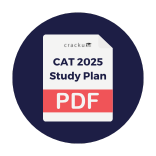Read the following passage and choose the answer that is closest to each of the questions that are based on the passage.
From ancient Rome up to the Victorian era, a training in logic and rhetoric was meant to help privileged young men recognise spurious arguments and facts. Times have changed, but contemporary Italy is determined that its youth are prepared, as their ancient counterparts were, to engage meaningfully with the present-day version of the Forum — social media. At the end of October, 8,000 Italian schools will teach their students how to spot fake news through a programme developed with the help of journalists as well as tech giants Google and Facebook. In Israel, the University of Haifa is launching a course titled “Fake News”.
The purpose of these courses is to ensure that public debate, particularly during election campaigns, is not hijacked by vested interests. Since the US presidential election in 2016, the spectre of Russia and its use of online propaganda has loomed large over public discourse in the West. In other parts of the world too, doctored images and blatant lies have been published by “news” websites. Given the speed with which information is shared online, the damage is already done by the time a fake story is exposed. The voters of tomorrow certainly need to be armed with the ability to sift bare facts from motivated fiction. The effects of social media on the formation of opinion, however, go far beyond fake news.
Traditional or legacy media is ordered by a need for balance. A newspaper, for example, has sections that deal with politics, crime, sports, the arts et al. There is, at least in principle, an attempt to tell both sides of a story in each report. On social media, the only editor is the user herself. Algorithms ensure that people see more of what they “like”, that biases are reinforced rather than countered. Fake news is certainly a crucial aspect of online propaganda. But for young citizens to form opinions based on multiple viewpoints, they need to consciously seek out more than they are comfortable with.
Solution
The first paragraph of the passage beautifully highlights the differences between ancient Roman and Victorian education in logic and rhetoric compared to today’s exciting initiatives, like those in Italy, which focus on helping students spot fake news. The goal in both situations is to equip young people with the skills to engage thoughtfully in public discussions and to identify flawed reasoning or misinformation. In this way, the purposes of education, both past and present—critical thinking and active participation in conversations—align closely, making Option B the best choice.
Option A is incorrect because the passage indicates that the context has shifted, but it does not state that the purpose of education has drastically changed. In fact, it emphasizes continuity. Similarly, Option C is incorrect; although privileged young men were educated, the goal was not merely to gain privilege but to encourage critical thinking. Option D lacks specificity and is not directly supported. The passage primarily addresses the continuity of educational objectives rather than an expansion of its foundation.
Correct answer is therefore option B
Create a FREE account and get:
- Download Maths Shortcuts PDF
- Get 300+ previous papers with solutions PDF
- 500+ Online Tests for Free

